#Denis Gifford
Explore tagged Tumblr posts
Text


A Pictoral History of Horror Movies by Denis Gifford, 1973
#vintage#A Pictoral History of Horror Movies#1973#1970s#Denis Gifford#king kong#godzilla#the mummy#gill-man#the creature from the black lagoon#creature from the black lagoon#dracula#frankenstein#frankenstein' s monster#horror#halloween
599 notes
·
View notes
Text
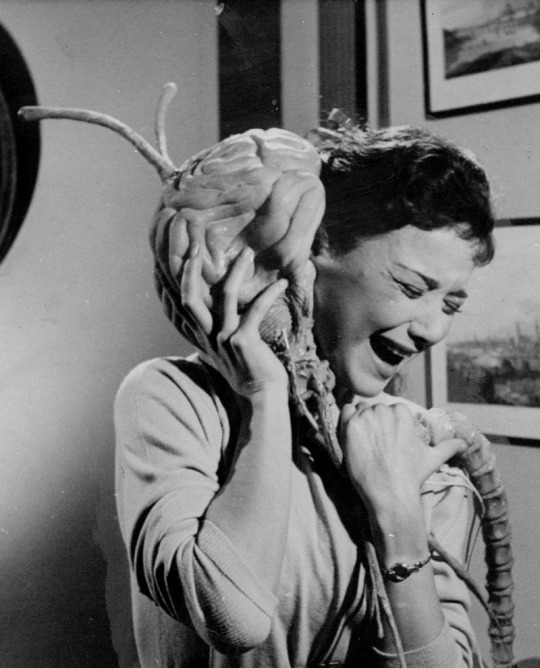
Fiend Without a Face | Arthur Crabtree | 1958
Kim Parker. This is another of the iconic-to-me images from Denis Gifford’s A Pictorial History Of Horror Movies (page 171 this time) which stuck in my imagination for decades before I ever got to see the movie.
The image description "Kim Parker has her brain sucked out of the back of her head by materialized thought" isn't exactly accurate, but there's a certain tautness to the skin around her ear which suggested to my younger self that this was indeed the case.
#Kim Parker#Denis Gifford#A Pictorial History Of Horror Movies#Arthur Crabtree#Fiend Without a Face#1958
53 notes
·
View notes
Text

The Best of Eagle Annual 1951-1959 by Denis Gifford.
#comic books#british comics#collected edition#hardback#eagle comic#eagle annuals#uk annuals#british annuals#denis gifford
1 note
·
View note
Text
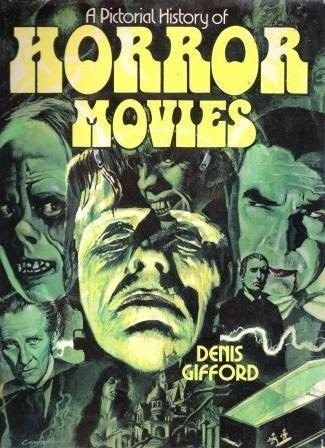

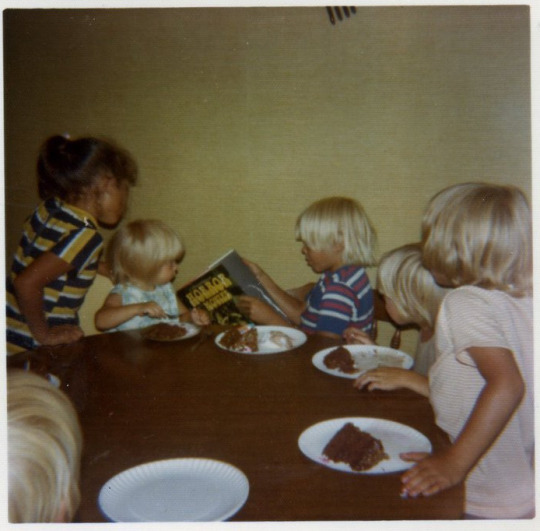
A Pictorial History of Horror Movies by Denis Gifford and me on my 11th birthday in 1973 holding same book! I still own a first edition to this day.
82 notes
·
View notes
Text

Found in the book Pictorial History of Horror Films by Denis Gifford ⋆۵
17 notes
·
View notes
Text
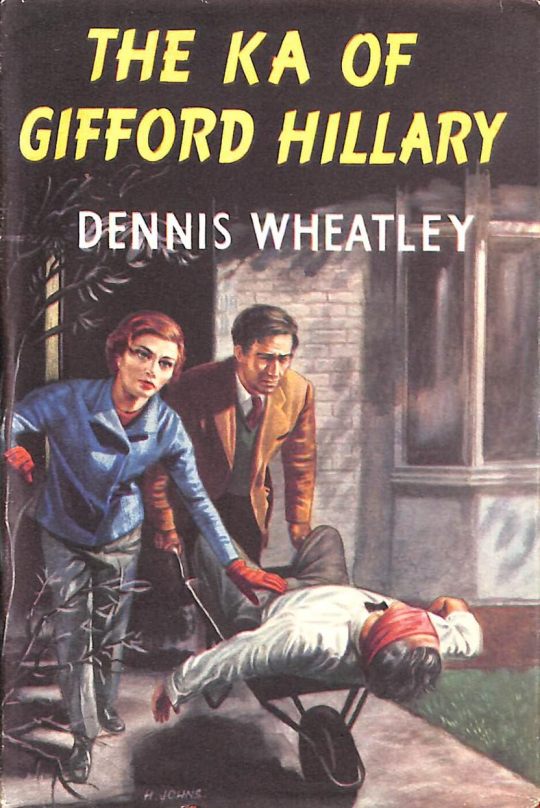
DENIS WHEATLEY: THE KA OF GIFFORD HILLARY
#denis wheatley#pulp#horror#pulps#pulp horror#pulp art#thriller#thrillers#occult#occult horror#spiritualism#ka#black magic#magic#satanism#pulp book#halloween#happy halloweeeeeeen#all hallows eve#spooktober#spooky season
10 notes
·
View notes
Text
Gifford asks the question: what goes on in the minds of humans when they think about climate change? More specifically, why do they fail to react, or outright deny it? When I did my research, Gifford found 13 main psychological barriers to dealing with climate change. For communication purposes, he calls them “Dragons”. Now he’s up to 29 different Dragons.
We discuss a couple of examples, like “Social Norms and Equity”. Apparently, people try to follow others that they admire. If those others are driving gas guzzlers and living in monster houses – we want to do that too.
Then there is “Reactance” – a rebellious unwillingness to be told what to do – even if that action could save the person suffering or even their lives.
You can find a quick list of the Gifford’s “dragons” behind climate denial in this transcript from the show.

3 notes
·
View notes
Text
open: f/nb based: your muse just found rory's laptop and therefor found out about his obsession with them. who: rory gifford, he/him, 21, hacker
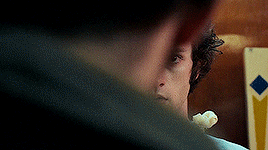
“i’m so sorry…” what else could he do but apologize to the subject of his obsessions once she stumbled upon the evidence of his fascination? there was no denying the dozens of tabs open on his laptop all linking back to her social media, screenshots of her dms and pictures from her webcam that there's no way he could've had— rory just had to find a way to own up to it without scaring her off.. "it's not what you think, please just let me explain."
9 notes
·
View notes
Text

Greta Thunberg has canceled her appearance at Edinburgh book festival and accused sponsors Baillie Gifford of "heavily" investing in fossil fuels, which it has denied. Festival organisers say they respect her decision, but are standing by the sponsor : Sky News #gretathunberg
2 notes
·
View notes
Text

DENIS GIFFORD Quick On The Draw Tv Show Book Look in Books Acceptable
0 notes
Text
Public Design and Hegemonic Systems

Image credit: The Range.co.uk, Home_Leisure_Garden
"Recent research in social psychology has stressed the fundamental role of space, place, and environmental categories in the constitution of subjectivity and the regulation of social interaction. Mostly assuming a discursive epistemological framework, this emerging trend encompasses a varied set of approaches interested in the social construction of space. The main topics investigated include the normative meaning of morally connoted spatial discourse regulating neighborhood relations; the language of place as a system of rhetorical warrants reproducing ideologies of racial exclusion; the role of place-discourse in women's narratives of identity; or the value of landscape rhetoric in the construction of nationhood... Building on a well-known idea in environmental psychology and human geography, according to which personal experience is unavoidably located, the main point made by the bulk of these studies is that our individual and shared interpretations of space and place-behavior are also culture-bound discursive resources that accomplish functions in larger sequences of social (inter)action, often echoing broad ideological processes...
A particular strand within this set of studies has more recently been concerned with "the political significance of people's psychological representations of space, accepting that "these shape people's understandings of who belongs, the rights and freedoms that people may claim and exercise, decisions where we feel 'at home' and 'out of place,' where we may move to, or avoid, and much more besides" (Hopkins & Dixon, 2006, p. 174). According to these authors, places are relevant not just because they afford and shape psychological experiences, but also because such "psychological constructs" may be socially deployed to provoke particular political effects aligned with people`s individual or collective interests and demands. This justifies Hopkins and Dixon's claim for political psychology "to recover the micropolitics of people's everyday constructions of place and space" (p.174). This task involves both acknowledging the representations of place which imply psychological notions of who we are, where we belong, and to whom we are committed, as well as the discursive processes that make place-representations work as symbolic devices with a political value This twofold political and psychological value of place representations is particularly clear
....A third psychological notion which is deemed important to public space dynamics is "territoriality," "a pattern of behavior and attitudes based on perceived, attempted, or actual control of a definable physical space that may involve habitual occupation, defense, personalization, and marking of it" (Gifford, 1987, p. 120). Public spaces may work as territories whenever people try to exert control over it, eventually leading to spatial conflicts that shed light on the two main functions of territoriality: regulation of social interaction and the display of identity (Brower, 1980). In neighborhood and community spaces, territorial behavior primarily indicates and reinforces an ingroup sense of who belongs to the place (i.e., Lalli' s urban-related identities). Also, competition for a public site as the only space available for carrying out incompatible activities might lead to struggles over the uses of that site, sometimes involving occupation, eviction, aggression, and violence . Political violence will appear via territoriality "when all other means have been exhausted, when an individual is unaware of alternatives, or when an individual is denied other means - such as when some groups, through poverty or discrimination, are denied equal access to the justice system". Similarly, Merelman (1988) underlines this political facet of territoriality asserting that "territory is an important resource in the struggle for power and status liable to political manipulation" (p. 579). Hence, both psychologically and politically speaking, through territorial behavior space reifies power and organizes the identities of, and social interactions between, the controlled and the controller (Sack, 1986). Power imbalances become visible in public spaces whenever socially disadvantaged individuals (e.g., homeless, squatters, drunks, etc.) are sanctioned and removed from the urban territory for using it in ways that defy the dominant conception of order in the city-space, breaching a micropolitics of the urban environment that calls for disciplined sociospatial behavior. Power reveals itself then as an imposed or self-applied restriction of freedom of action in the public space (Lukes, 2005)."
Di Masso, Andrés. “Grounding Citizenship: Toward a Political Psychology of Public Space.” Political Psychology 33, no. 1 (2012): 123–43. http://www.jstor.org/stable/41407024
Notes: These are the main excerpts from a text that encapsulates some concepts I've been investigating about the hegemonic undercurrents of public and private urban/standardised design/architecture. Synthetic lights and liminal spaces come into play with these ideas as centres of passive or typically disengaged social spaces that in ways, are unregistered by users when moving through (in-between spaces, by which few things occur, and direct one between one place and another, in isolation). I have been developing an interest in handrails and the guidance that they provide to bodies in public spaces- for stabilisation and assistance, safety, and direction. Handrails guide bodies and let the mind rest or disengage while holding on. What happens when we disengage, when objects guide us more than ourselves? What occurs psychologically when the urban environment is imprinted into our understandings of movement and activity, when people live within the structures and systems formed by commercial and state agendas?
0 notes
Text
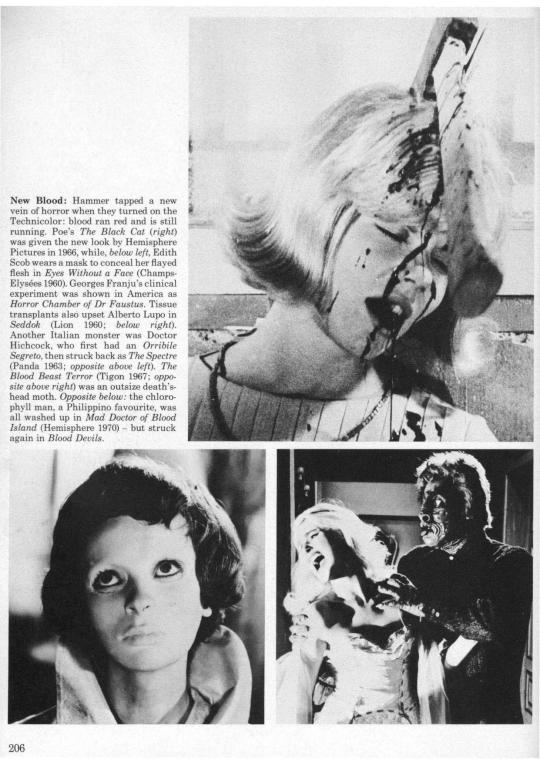
A few of the films I've watched and posted over this Halloween season have been brought to you courtesy of page 206 of Denis Gifford's A Pictorial History Of Horror Movies, my fave.
#The Black Cat 1966#Seddok l'erede di Satana#Atom Age Vampire#Les yeux sans visage#Eyes Without a Face#Denis Gifford#A Pictorial History Of Horror Movies#The Black Cat
120 notes
·
View notes
Link
Country music star Jimmie Allen bravely opens up about the emotional turmoil he faced following sexual abuse allegations in 2023. In a candid interview with Kathie Lee Gifford, Allen reveals his struggle with suicidal thoughts and the importance of support systems during challenging times. From Accusation to Devastation: The Allegations Against Allen In May 2023, Allen's career and personal life were rocked by sexual abuse allegations from his former manager, Jane Doe. Doe accused Allen of rape and sexual assault on multiple occasions. Allen vehemently denied the claims, stating they had a consensual relationship. Jimmie Allen's Darkest Hour The allegations resulted in significant professional repercussions. Allen was suspended by his record label, booking agency, and management team, jeopardizing his financial security and artistic future. Family First: The Fear of Not Providing As a father of six, Allen's primary concern was his ability to provide for his family. With his career seemingly on hold, the emotional and financial strain led him to a dark place. "I was sitting there, and I felt like the whole world had just collapsed," Allen told Gifford. "Because the first thing my brain goes to is not the career, it's 'How am I going to provide for my kids?'" This crippling anxiety, coupled with the pervasive "guilty until proven innocent" mentality he perceived, pushed Allen to consider a tragic solution. A Grim Consideration: Suicide as a Misguided Answer The despair overwhelmed Allen to the point where he viewed suicide as a means to financially secure his family through his life insurance policy. This desperate thought process highlights the devastating impact of sexual abuse allegations, even when false. Thankfully, a timely intervention from a friend saved Allen from making a permanent decision. A simple yet powerful text message reading "Ending it isn't the answer" served as a lifeline during his darkest hour. The Road to Recovery: Support, Therapy, and Self-Reflection Following the intervention, Allen sought professional help through therapy and a mental health retreat. While the initial suicidal thoughts subsided, the journey to recovery was far from over. Another friend provided crucial financial support, easing Allen's immediate financial worries and allowing him to focus on his mental health. This generosity exemplifies the power of a strong support system during times of crisis. Through therapy and self-reflection, Allen started to shift his perspective. His initial anger towards Doe transformed into a desire to understand her motivations. He questioned how he might have unintentionally neglected her emotional needs, prompting the accusations. This shift in perspective reflects Allen's commitment to personal growth and his willingness to learn from difficult experiences. Lessons Learned and a Brighter Future Allen's story serves as a stark reminder of the mental health struggles associated with false sexual abuse allegations. It underscores the importance of seeking help and surrounding oneself with a supportive network during challenging times. While the legal case against him has been dropped, Allen acknowledges the ongoing process of rebuilding his career and public image. However, his focus on personal growth, mental health, and his family offers a hopeful outlook for the future.
#FalseAccusations#JimmieAllen#JimmieAllensDarkestHour#Mentalhealth#recovery#sexualabuseallegations#SuicidePrevention#supportsystems
0 notes
Text

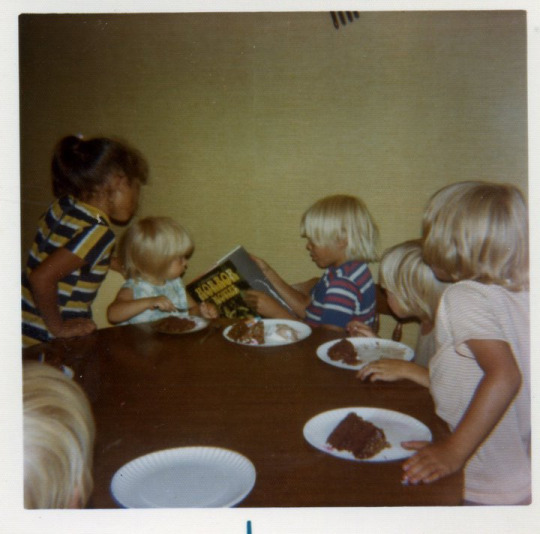
Me holding Denis Gifford’s Pictorial History of Horror Movies book on my 11th birhday in 1973.
It was my Bible. I still have a 1st edition. Every good Monster Kid does.
Its in Lawton, Michigan.
17 notes
·
View notes
Text
Charley's War, Doctor Who, and rare Ron Embleton art offered in latest Compalcomics auction
An incredible array of British comic art, including Ron Embleton's first commercial work, is set to go under the hammer this month
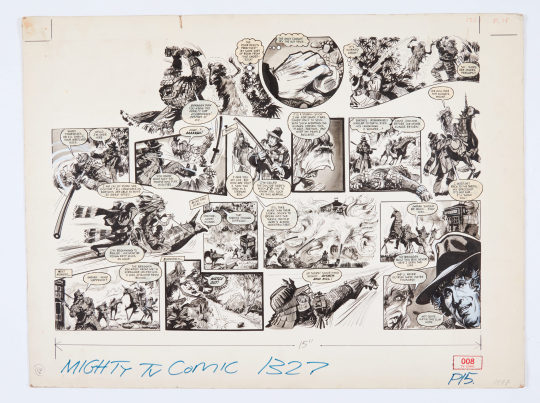
View On WordPress
#2000AD#Adventure Comics#Auction News#Battle Picture Weekly#Charley&039;s War#Compalcomics#Daleks#Dave Gibbons#Denis Gifford#Doctor Who#downthetubes News#Eagle#Eric Parker#Frank Bellamy#Garth#Joe Colquhoun#John Canning#John Ryan#Jordi Penalva#Judge Dredd#Lettice Leaf#Look and Learn#Michael A. Cox Comic-Book Archive#Mick McMahon#Ray Regan#Ron Embleton#TV Comic#William Stobbs
6 notes
·
View notes
Text

▶️ A Pictorial History Of Horror Movies
by Denis Gifford
Source: issuu
5 notes
·
View notes